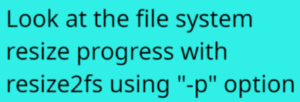This configuration is a systemd service unit file for managing a TeamCity Build Agent.
cat /etc/systemd/system/teamcity-agent.service

After=network.target:
This directive ensures that the service starts only after the network is available.
Type=oneshot:
This indicates that the service runs a single task and then exits. In this case, the agent.sh start script runs, starts an agent child process in the background, and then exits (meaning the main process runs and exits immediately after initiating the child process).
If RemainAfterExit is not set, a Type=oneshot service will be marked as inactive (dead) once the ExecStart command completes, regardless of the exit status.
ExecStart=/home/teamcityagent/agent/bin/agent.sh start:
Command to start the agent.ExecStop=-/home/teamcityagent/agent/bin/agent.sh stop:
Command to stop the agent. The - prefix allows the service to ignore errors if the stop command fails.RemainAfterExit=yes:
This keeps the service in an active state after the ExecStart command completes. When you set RemainAfterExit=yes in a systemd service file, it means that the service will remain in an “active” state even after the ExecStart command completes.
The systemctl status teamcity-agent command will show the service as “active (running)“, rather than “inactive (dead)” even though the ExecStart command (in this case, agent.sh start) has finished executing.
With RemainAfterExit=yes:
–> It keeps the status as active (running), if the ExecStart command exited with a status defined in SuccessExitStatus.
–> It keeps the status as active (exited), if the ExecStart command exited with a status code, which is not listed in SuccessExitStatus.

SuccessExitStatus=0 143:
Defines the exit codes that systemd will consider a successful exit. 143 is used when the process is killed with SIGTERM, which is expected during an upgrade.




